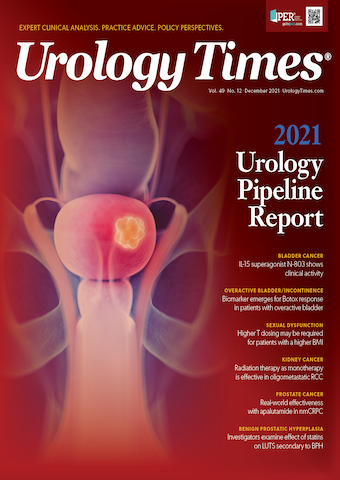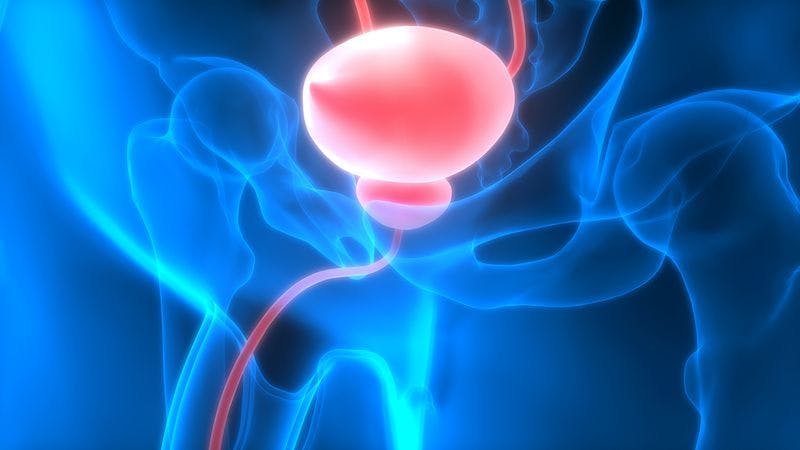Publication
Article
Urology Times Journal
Practical ways to address burnout in your urology practice
Author(s):
Keeping up to date on EHR updates is 1 step you can take.
Robert A. Dowling, MD

The World Health Organization defines burnout as “a syndrome conceptualized as resulting from chronic workplace stress that has not been successfully managed. It is characterized by three dimensions: feelings of energy depletion or exhaustion; increased mental distance from one’s job or feelings of negativism or cynicism related to one’s job; and reduced professional efficacy.”1 The contributions to burnout identified by physicians include bureaucratic tasks, time pressure, lack of respect, insufficient compensation, lack of control and autonomy, increased computerization, and government regulation. Much of the energy on this subject is directed at recognizing the symptoms, learning coping skills, and accepting the inevitability of these contributing workplace stresses. In this article, I will take a slightly different approach by challenging the inevitability of some factors and offering a few practical suggestions that may help manage burnout by addressing the root cause.
Bureaucratic tasks
When physicians complain about bureaucratic tasks, they are probably thinking about processes imposed by government and private insurance companies. Prior authorizations, requests for medical records, drug formulary substitutions, and appeals of denials are examples of the systemic dysfunction in our fee-for-service reimbursement environment that may push work to the physician. Some of these bureaucratic tasks can be prevented, or prevented from requiring physician involvement. For example, most contemporary electronic health records include drug formulary checking as part of the core functionality. It may require a subscription, configuration, or training. A small investment of time on the front end prevents time-consuming tasks later—like answering a call from a pharmacist or patient about a routine substitution.
Prior authorizations and requests from insurance companies for medical records are generally predictable. Most urology practices have 20 common patient types, 20 common surgical procedures, and less than 20 common insurance companies. Your practice can easily track this activity for a month and learn to recognize which combination of activities/companies/diagnoses are generating these requests; armed with that intelligence, you can prevent requests by authorizing or submitting records proactively. Report abuses to your state board of insurance. As a last resort, consider terminating contracts with companies whose bureaucracies are not worth the contribution to your bottom line—and your burnout.
Another type of bureaucratic task that may contribute to physician burnout is low-value documentation to support compliance with coding, reimbursement, or value-based care models. A prime example of this is documenting the review of systems or multisystem examination for a routine office encounter, or citing extraneous information to document medical decision-making. There is usually no good reason to cite a review of systems for an established patient; reimbursement is almost always based on history, medical decision-making, and/or time spent with the patient.
Keeping current with arcane and complex coding rules is in itself a contribution to burnout. Instead of trying to master every possible coding scenario, or coding every single encounter one at a time, simplify: Identify your 20 common visit types that constitute 80% of your encounters and code them the same way every time. Override or turn off the coding engine in your electronic health record (EHR) for these common visits. Be sure your note templates are working for you, not against you, by including only the necessary sections or choices. These simple tactics return valuable hours of time and relieve pressure contributing to burnout.
Documenting for the Merit-Based Incentive Payment System (MIPS) deserves special mention as a potential contributing factor to burnout. There is widespread frustration with the effort required for MIPS participation, the modest rewards, and the perceived lack of benefit to patient care. However, there is no need for most physicians to understand the complexities of the model, the scoring paradigms, or the fee schedule adjustments. Simplification, delegation, repetition, and discipline will relieve the pressure from these bureaucratic tasks. Recent MIPS data reveal that urologists are submitting data for quality measures that are driven entirely by nonphysician documentation.2 In most practices, if the clinical staff take vital signs, update the current medication list, and perform a urinalysis at each visit, and once a year ask about tobacco use, vaccine status, and colonoscopy, they will have optimized performance on quality measures—all with no direct physician documentation. There is a real cost to MIPS: It may contribute to staff burnout, and it may extend the length of patient intake by a few minutes—but it involves bureaucratic tasks that are arguably already being done for other reasons or can be delegated and simplified. If you think MIPS is a cause of your burnout, take a look at your processes and see if they can be simplified.
Time pressure
Burnout is often recognized when the amount or pace of work exceeds the available capacity. There are a finite number of hours in a work week, and once the limit is reached, the only management strategy to relieve time pressure is to work more efficiently, ie, do more work in the same or fewer hours. The first step in addressing this contribution to burnout is to believe that it is possible to be more efficient and understand it will take some work to get there. The next step is to keep a journal of a day in your life. To the extent possible, track everything you do: hospital rounds, travel time, clinic hours (copy a list of your appointments, including patient type), meals, surgeries, consults, phone calls, document review and sign-off, on-call activities, drug rep visits, sleep, etc. Your EHR may have an audit report that can simplify this record, especially for visits and phone calls. If you have a scribe, they can keep your journal.
Next, give your journal to a staff or manager who can transcribe your diary into rows on a spreadsheet with these columns: Category (patient care, admin, personal), task, time spent, required physician (Y/N), notes. You should fill out the column on whether a task required a physician or could have been delegated. A high-level analysis of this journal should tell you how much time is being spent on each category, and what activities do and do not require your involvement. Urologists and practice owners are understandably proud of the ability to “do it yourself”; relieving time pressure requires a fresh look at trade-offs and delegation.
Drilling down into your clinic schedule should identify possible opportunities for scheduling efficiency. Get specific: Is your schedule full of routine visits and going through the motions? Can your scheduling template be refined to prevent high-pressure situations like cancer conferences back to back? Do you have a workable list of patients available to fill empty slots on short notice? Do you program work in spots or pauses in your schedule? If you have been in practice for years, there should be a predictable pattern of patient types (demand) and schedule openings (supply). Rearranging a schedule may return time previously spent on travel, waiting, or switching from clinical to nonclinical activities. Many urologists have come to recognize that doing 4 surgeries on a Friday is far less efficient than doing 1 surgery before clinic 4 days/week because of case turnover time out of their control. You can eliminate some peaks and valleys of activity, and waste.
Be prepared: The vast majority of office visits in a urology practice are elective, common, and predictable. Surprises are stressful and add to time pressure. A clinical staff member reviewing a patient’s chart in advance of the visit is making a deposit in your time bank. Any missing information should be corrected and any questions anticipated and answered before the visit. You are less likely to feel burned out with a predictable schedule and more likely to respond appropriately to surprises.
Learn to recognize and leverage downtime. If you finish with 1 patient before the next one is ready, use the time to do a predictable, short task: review a lab, refill a prescription, return a routine phone call, or get a cup of coffee. Reflect on how often these gaps are occurring and whether it might mean it’s time to review your template again, retrain your staff, or evaluate how much time you are spending with your patient.
Insufficient compensation
Most burned-out physicians have little control over reimbursement and probably believe they are maximally productive. The only remaining lever to address compensation is to decrease expenses. Once again, the first step is a willingness to examine every expense and understand whether it is reasonable and necessary. The major expense categories are recurring and fixed: rent, salaries, insurance, etc. Drugs and supplies are examples of variable expenses. Your accounting software or accountant should be able to provide you with a summary of expenses by category. The next step is to benchmark these expenses to other urology or physician practices. Benchmarks are published by professional associations, private companies and, in some cases, the Centers for Medicare & Medicaid Services. If your expenses are higher than benchmarks in 1 or more categories, it’s time to roll up your sleeves and look at every expense. Small variances in overhead percentage can lead to large changes in the bottom line. Successful businesses are always examining and adjusting their expenses. Finally, consider participation in group purchasing organizations to reduce the cost of supplies or even professional services.
Increased computerization
I have some bad news: Computers are here to stay and demand to use them may increase. Resistance is not productive. Contemporary surveys identifying computers as the source of burnout could be reflecting several correctable problems. First, physicians may be using outdated software or systems. First- and second-generation EHRs were typically deployed on local servers that require upgrades and maintenance and were often plagued by performance issues, design flaws, and bugs. Modern systems are deployed in the cloud, are more reliable, and have a better (faster) user experience. If you are still on an early system, consider changing to address your burnout. (Warning: Changing EHRs is stressful, too!)
Second, almost all small and medium practices underinvest in initial training and completely ignore ongoing training. The inevitable result is an undertrained physician user who forges a path of least resistance and hardens inefficient or redundant workflows. This is completely preventable and a correctable contribution to burnout; users do not know what they don’t know. The contemporary EHR is typically upgraded and enhanced several times a year, resulting in new features, many of them time-saving. Retraining requires a small investment of time; it will return huge dividends. This may be the single most treatable contribution to physician burnout.
Third and related: Many physicians do not use order sets, macros, favorites, or other time-saving features of almost all EHRs; they may not believe there is a better or faster way, especially if they have been using the system for years. Open your mind to the possibility that there may be a faster way of doing computer tasks, and that you may need training to even understand the possibilities. Finally, if you truly blame the computer or your EHR for your burnout, take another look at a scribe. The evidence is strong that scribes reduce physician burnout3 and are a good return on investment.
Bottom line: Burnout is a real and serious phenomenon with multiple contributing causes and significant consequences. Some burned-out physicians may surrender to the idea that there is nothing they can do, leading to depression or more serious outcomes—including “reduced professional efficacy.” I challenge you to instead believe it can be better and to take some simple steps under your control. Targeted review of your documentation habits, your schedule, your EHR, and your benchmarked expenses may provide an opportunity to improve your professional satisfaction, extend your career, and optimize your “professional efficacy.”
References
1. World health Organization. Burn-out an “occupational phenomenon.” International Classification of Diseases, Eleventh Revision. Accessed October 19, 2021. https://www.who.int/news/item/28-05-2019-burn-out-an-occupational-phenomenon-international-classification-of-diseases
2. Dowling R. How does urology’s 2019 MIPS performance stack up? Urology Times®. August 26, 2021. Accessed October 14, 2021. https://www.urologytimes.com/view/how-does-urology-s-2019-mips-performance-stack-up-
3. Corby S, Ash JS, Mohan V, et al. A qualitative study of provider burnout: do medical scribes hinder or help? JAMIA Open. 2021;4(3):ooab047. doi:10.1093/jamiaopen/ooab047

Newsletter
Stay current with the latest urology news and practice-changing insights — sign up now for the essential updates every urologist needs.































